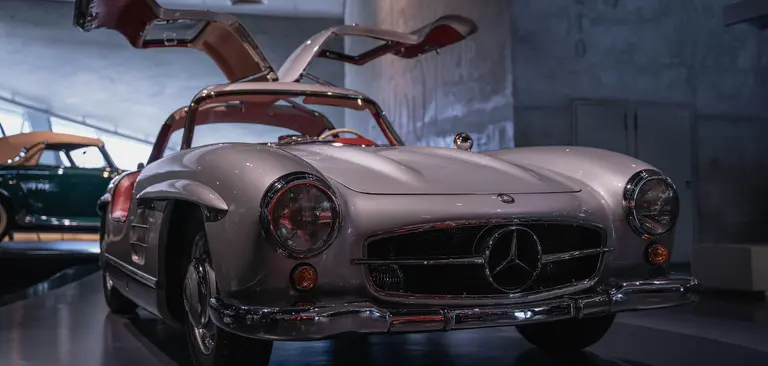Shop At Haya: Your Ultimate Shopping Guide
Discover the best shopping tips, trends, and deals for a smarter buying experience.
Chrome and Dreams: The Allure of Classic Cars
Discover the timeless charm of classic cars in Chrome and Dreams—where nostalgia meets design and every ride tells a story!
The Timeless Appeal of Classic Cars: Why They Capture Our Hearts
The allure of classic cars is undeniable, capturing the hearts of enthusiasts and casual admirers alike. One might wonder what makes these vehicles so timeless. Firstly, classic cars represent a unique blend of art and engineering, showcasing design aesthetics from eras long past. Each curve, color, and detail tells a story, inviting us to appreciate the craftsmanship that went into their creation. Additionally, the nostalgia associated with classic cars evokes a sense of longing for simpler times, making them not just vehicles, but treasured pieces of history.
Beyond their historical significance, classic cars possess a remarkable charm that connects generations. They often serve as a bridge between the past and present, igniting conversations and sparking dreams for restoration and customization. Many enthusiasts enjoy the community surrounding these cars, with events like car shows and rallies bringing people together to celebrate their shared passion. Ultimately, the timeless appeal of classic cars lies in their ability to provoke emotions, inspire memories, and foster a sense of belonging among those who admire them.

Exploring the History and Evolution of Classic Cars
Exploring the history of classic cars reveals a fascinating journey that began in the late 19th century, when the first gasoline-powered vehicles emerged. These early models, like the De Dion-Bouton and the Ford Model T, laid the groundwork for the automotive industry, introducing features that would become standard in the years to come. By the 1920s and 1930s, manufacturers such as Packard and Cadillac began to focus on style and luxury, creating vehicles that were not only reliable but also symbols of status. The evolution of these cars mirrors the technological advancements of the time, including the introduction of electric starters and automatic transmissions.
As we moved into the mid-20th century, the golden age of classic cars took form, characterized by the introduction of performance-focused models and innovative designs. The post-war era saw a surge in consumer demand, leading to iconic creations like the Chevrolet Corvette and the Porsche 356. This period also marked a shift towards more powerful engines and distinctive styling, influencing car culture significantly. Today, classic cars are not merely relics of the past; they represent a rich heritage and community passion, fostering clubs and events dedicated to their preservation and celebration.
What Makes a Car 'Classic'? Key Features and Characteristics
The term classic car refers to vehicles that possess a distinctive blend of age, heritage, and appeal that sets them apart from modern automobiles. Generally, to be classified as a classic, a car must be at least 20 years old, although some aficionados extend this timeframe to include vehicles that are 25 years or older. Key characteristics that contribute to a car’s classic status include its historical significance, unique design, and the emotional connection it fosters among enthusiasts. Additionally, the craftsmanship and innovations of the era during which the car was built often enhance its classic status.
Several features can also help define a classic car, among them:
- Rarity: Limited production numbers can increase a car's esteem and desirability.
- Performance: Iconic models often showcase advancements in engineering or are connected to significant racing achievements.
- Preservation: Well-maintained examples that retain their original parts and finish often gain more value and recognition.
This combination of factors makes a car truly 'classic,' creating a timeless appeal that resonates with collectors and enthusiasts alike.